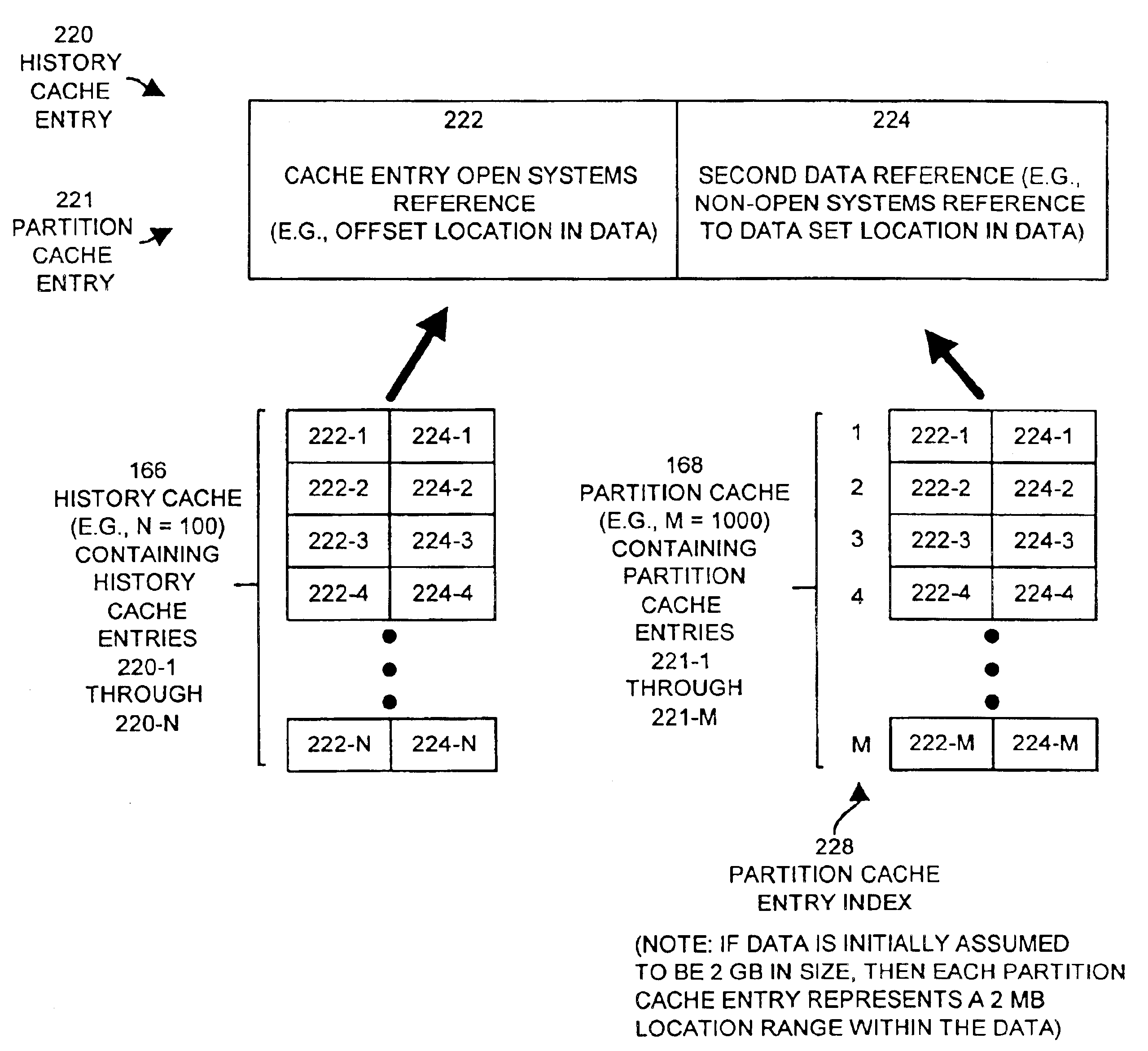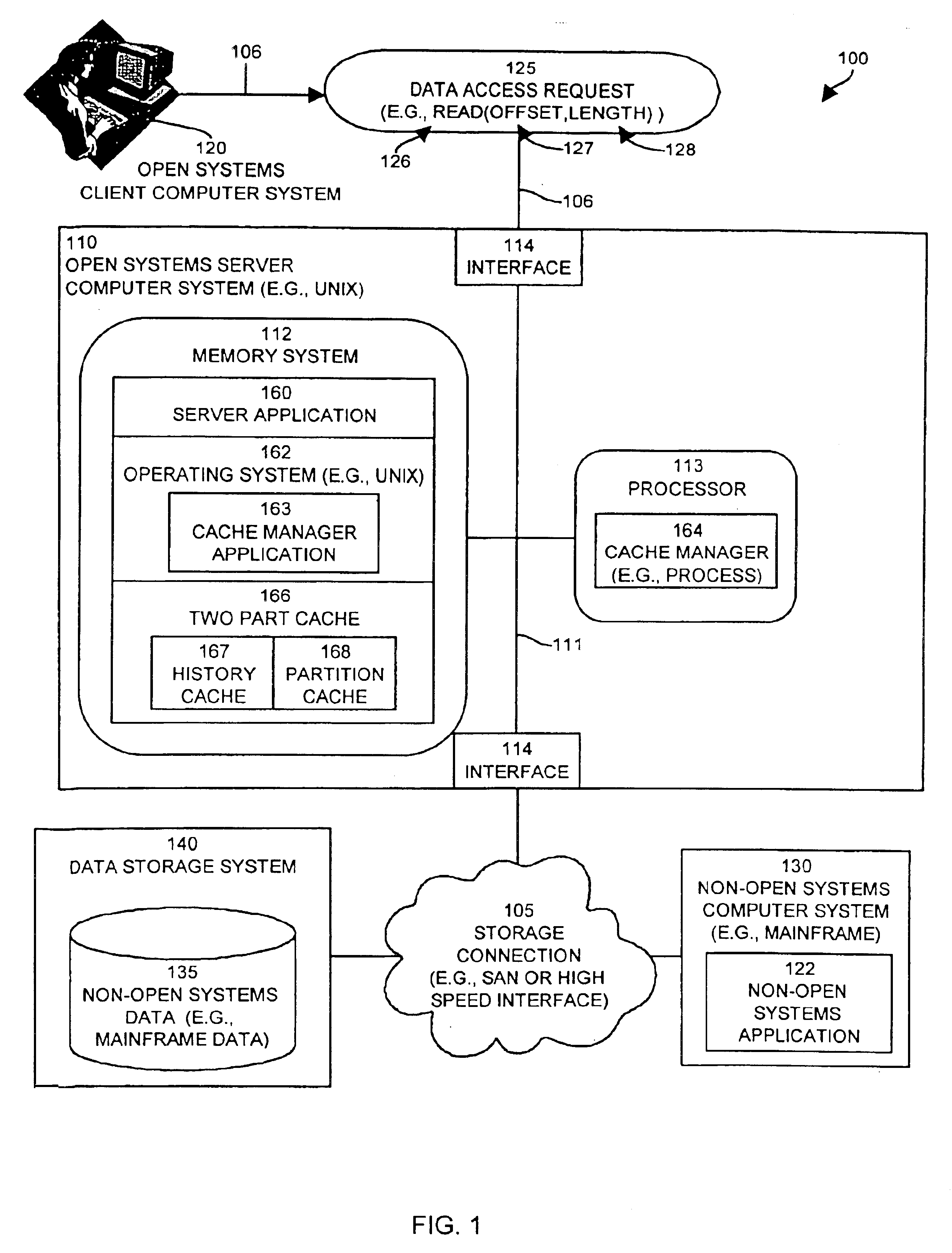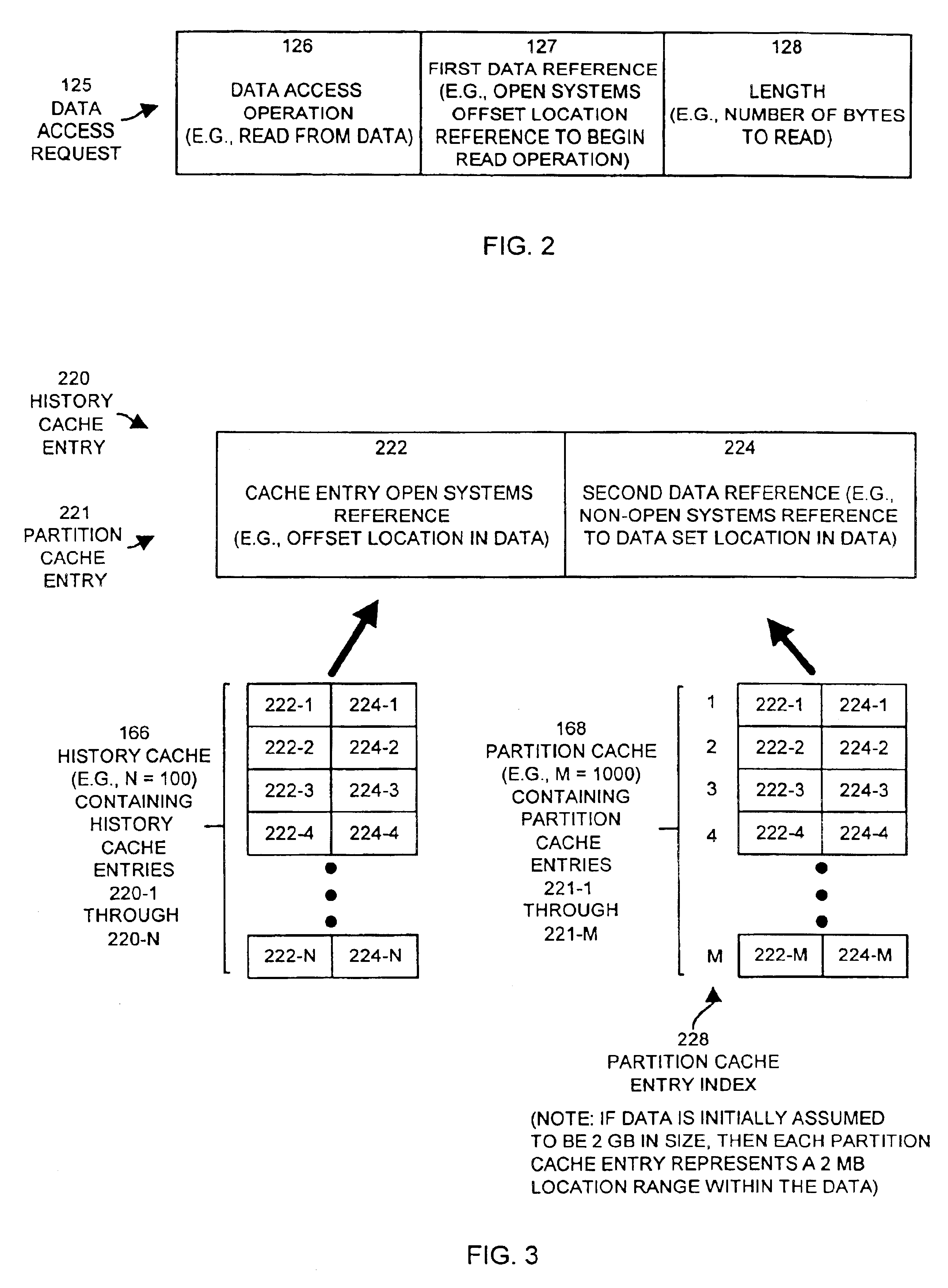Methods and apparatus for accessing data using a cache
a data access and cache technology, applied in the field of data storage and data access systems, can solve the problems of large processing time and variability of deficiencies, and achieve the effect of improving the data access time for accessing
- Summary
- Abstract
- Description
- Claims
- Application Information
AI Technical Summary
Benefits of technology
Problems solved by technology
Method used
Image
Examples
Embodiment Construction
[0064]Embodiments of the invention provide mechanisms and techniques that allow open systems computing platforms and software applications to more efficiently access non-open systems data. In embodiments of the invention, this is done by providing a unique cache mechanism that provides mappings between open systems file or data location references and corresponding non-open systems file or data location references. The cache mechanism includes a two-part caching system that includes a history cache and a partition cache.
[0065]Cache entries in the history cache represent mappings between open systems data locations (e.g., offsets) and corresponding relative non-open systems locations (e.g., record and / or block positions) in the non-open systems data (e.g., in a mainframe data set). Embodiments of the invention produce such cache entries as a result of processing open systems data access requests for access to the non-open systems data. The partition cache contains a predetermined num...
PUM
 Login to View More
Login to View More Abstract
Description
Claims
Application Information
 Login to View More
Login to View More - R&D
- Intellectual Property
- Life Sciences
- Materials
- Tech Scout
- Unparalleled Data Quality
- Higher Quality Content
- 60% Fewer Hallucinations
Browse by: Latest US Patents, China's latest patents, Technical Efficacy Thesaurus, Application Domain, Technology Topic, Popular Technical Reports.
© 2025 PatSnap. All rights reserved.Legal|Privacy policy|Modern Slavery Act Transparency Statement|Sitemap|About US| Contact US: help@patsnap.com



